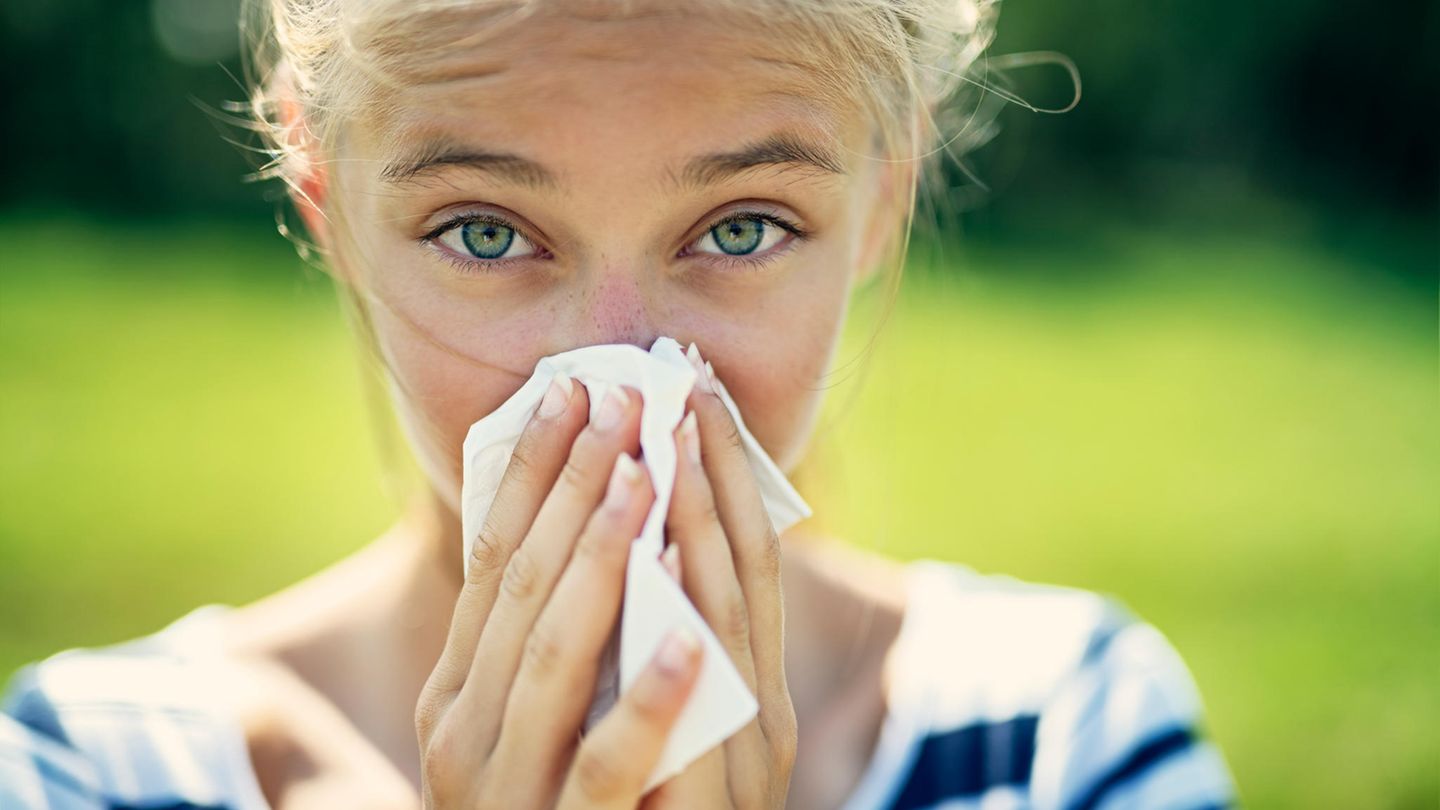Everyone is sniffling, sneezing and coughing – at least that’s the impression many people have, if they haven’t already caught a cold themselves. Isn’t it just the weather that’s going crazy this summer?
Are we really going through a summer of colds?
The impression is not misleading, as the current data from the Robert Koch Institute (RKI) in Berlin, which is responsible for such statistics, show. What is colloquially called a “cold” or “summer flu” is technically called “acute respiratory illness” or “ARE” for short. This includes all acute respiratory diseases, from flu-like infections with one of dozens of rhinoviruses to “real” influenza and infection with one of the currently circulating variants of the pandemic coronavirus Sars-CoV-2. However, because hardly any testing is being done for this anymore, the epidemiologists and statisticians at the RKI feed current and past data into their computer models and thus estimate the actual infection rate. This shows us that we are currently at record levels: around 6,000 out of 100,000 residents are sniffling and coughing according to the data from the last RKI weekly report, a total of around five million. The previous week an incidence of 4,900 was recorded. The trend is therefore upwards (red line).
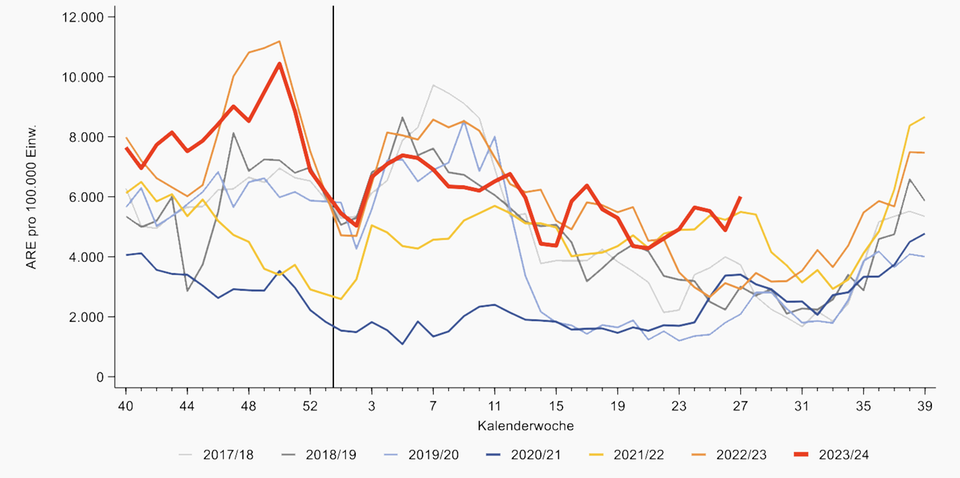
Are these diseases serious?
At least we can cautiously give the all-clear. If we take the number of people seeking medical help in a doctor’s office or even in hospital because of an acute respiratory infection, the situation is currently not very different, although it is higher than in the years before the coronavirus pandemic. Around 830,000 visits to the doctor’s office due to flu-like symptoms were registered in the first week of July alone. That is about twice as many as in the pre-pandemic years or even last year.
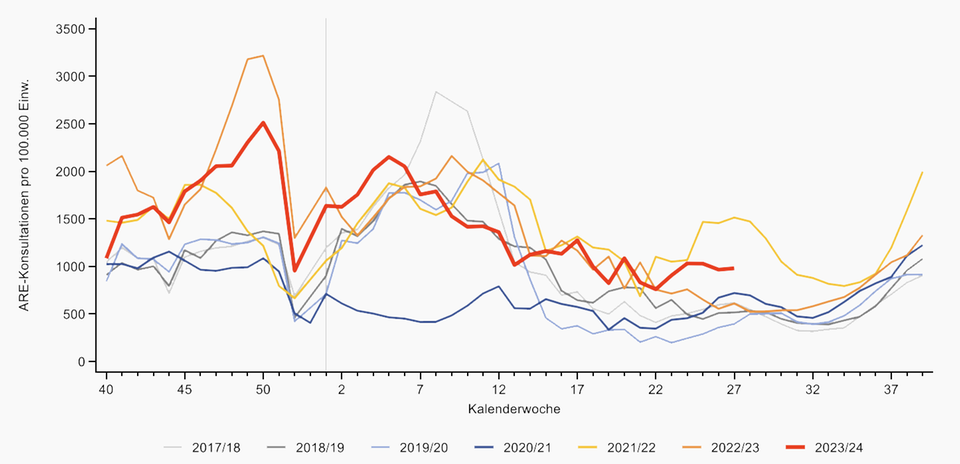
If you look at the age groups, it particularly affects the very young up to the age of four and school children up to 14. The figures for adolescents and younger adults up to the age of 34 are also slightly above the average for the entire population. This is not surprising, because these age groups have the most contacts. And contacts are the fuel for the infection process.
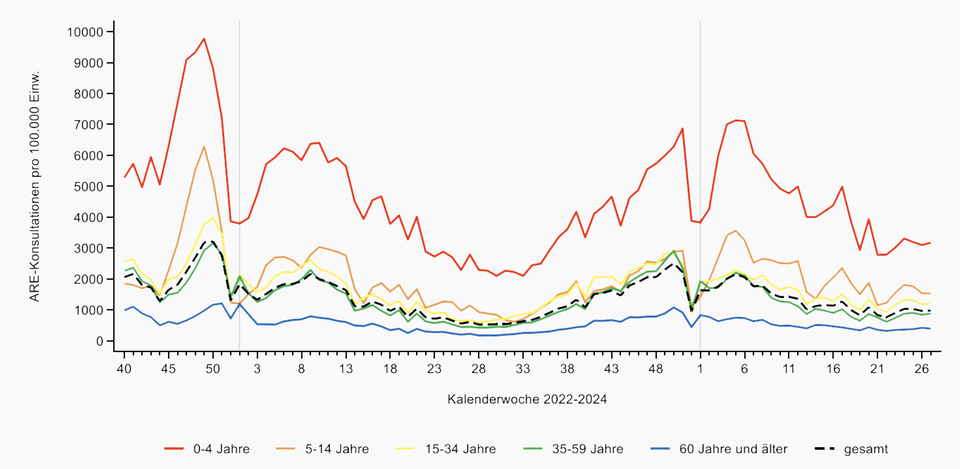
Despite the relatively high number of cases, the level of hospital treatment for respiratory diseases is completely normal compared to the average of recent years. Fortunately, really serious illnesses are rather rare. Significantly higher values compared to previous years can be seen in the age group from school age to 34 years. But even in this group, only about five out of a hundred thousand people have to be treated as inpatients. Most get away with cold symptoms. As a US study has just shown, patience is often required, especially when it comes to coughing. Depending on the infection – viral, bacterial or mixed – it took an average of between 15 and 18 days for the lungs to calm down again. Incidentally, it didn’t matter which pathogen was responsible for the cough. European studies have reached similar results.
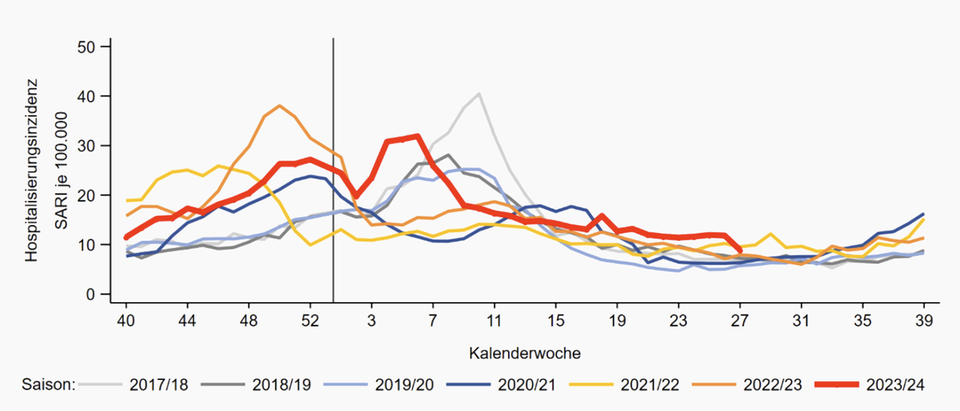
Will tests for circulating pathogens still be carried out after the corona pandemic?
There are permanent monitoring systems such as the approximately 700 “sentinel practices” scattered across the country, from which data on current infection events are regularly sent to the RKI. The number of samples examined in the laboratory is, however, small, because of course a harmless cold is not reportable in Germany. And not all patients who seek medical help for annoying but relatively mild respiratory complaints are immediately given a sample. This would require at least an “ILI”, i.e. an “influenza-like illness”, as it is known in technical jargon, a disease similar to influenza. In addition to a runny nose, hoarseness or cough, typical flu symptoms such as fever, fatigue or even aching limbs are also present. If swabs are then taken as a precaution, the laboratories carrying out the examination are legally obliged to report to the relevant health authority if they come across real flu viruses (influenza), RSV (the “respiratory Syncytial virus”) or the coronavirus Sars-CoV-2.
Which cold viruses are currently being discovered most frequently in our country?
In total, only 99 samples were examined in the laboratory in the last reporting week. A good half of these were positive. There were particularly many findings for the typical cold viruses (rhinoviruses) and also for Sars-CoV-2. Together, these two pathogens accounted for a good three quarters of the cases, with rhinoviruses clearly predominating. If you take a closer look at the coronaviruses, a variant with the abbreviation “JN.1” is currently gaining ground. It also belongs to the large family of the omicron variant that has been dominant since the end of 2021. In order to make the corona vaccine particularly suitable – similar to the seasonal flu – a vaccine for this subvariant JN.1 will soon be available. It offers additional protection against severe courses of Covid-19, especially for the elderly and people with pre-existing conditions. And anyone who has already been infected with JN.1 will hopefully have no problem building up suitable antibodies against this virus type and its equally active relatives such as KP.2 and KP.3. The flu (influenza) plays almost no role at the moment. In this sense, there is no such thing as “summer flu”.
Aren’t the pathogens that cause flu infections usually active in the cold season?
With Corona, we already noticed during the pandemic that at least this virus does not really want to stick to seasonal guidelines. There was already a “summer wave” back then. Three waves were recorded in 2022. Their peaks were in March, July and October. Nevertheless, this coronavirus is also one that finds good access through our mucous membranes in the mouth and throat, especially when it is rather cool and the first line of defense of the immune system is weaker than in summer temperatures. But such findings are not enough as the sole explanation for such a complex event as an epidemic. Viruses are not migratory birds that only appear in certain months. Rather, they are always somewhere. And if the interaction of pathogens, the environment and our own behavior is right, waves of infection that are unpredictable even for experts can arise at unusual times. The fact that we are currently dealing with a rather cool and wet summer could be one factor among many. Because we spend more time indoors than usual due to the frequent rain, the risk of infection increases.
What role does the European Championship play in the cold wave?
Major events such as the European men’s football championship that has just ended can also contribute to increased infection rates, as a British study just published in the journal “Science” shows. The research team evaluated data collected by the British Corona app during the previous tournament in 2021. On each day that the national teams of England or Wales were involved in a match, there was a clear peak in the number of registered infections. Not surprisingly, the fluctuations grew as the European Championship progressed with the importance of the matches, reaching their peak in the final on July 11, 2021, which England lost to Italy on penalties.
How can I protect myself and others?
This summer, too, the same advice applies as is recommended all year round with regard to the risk of infection with respiratory diseases: keep your distance and, if you become ill, reduce contact with others as much as possible. Hygiene is also important because of the different transmission routes. We can catch flu infections not only through droplet infections, but also through contact infections. So-called enteroviruses, which multiply in the intestines and are excreted in the stool, are actually in season now, although they are rarely detected in samples. Regular hand washing reduces the risk of infection in any case. Finally, the relevant vaccinations should be given in good time or refreshed.
Source: Stern
I’m Caroline, a journalist and author for 24 Hours Worlds. I specialize in health-related news and stories, bringing real-world impact to readers across the globe. With my experience in journalism and writing in both print and online formats, I strive to provide reliable information that resonates with audiences from all walks of life.

